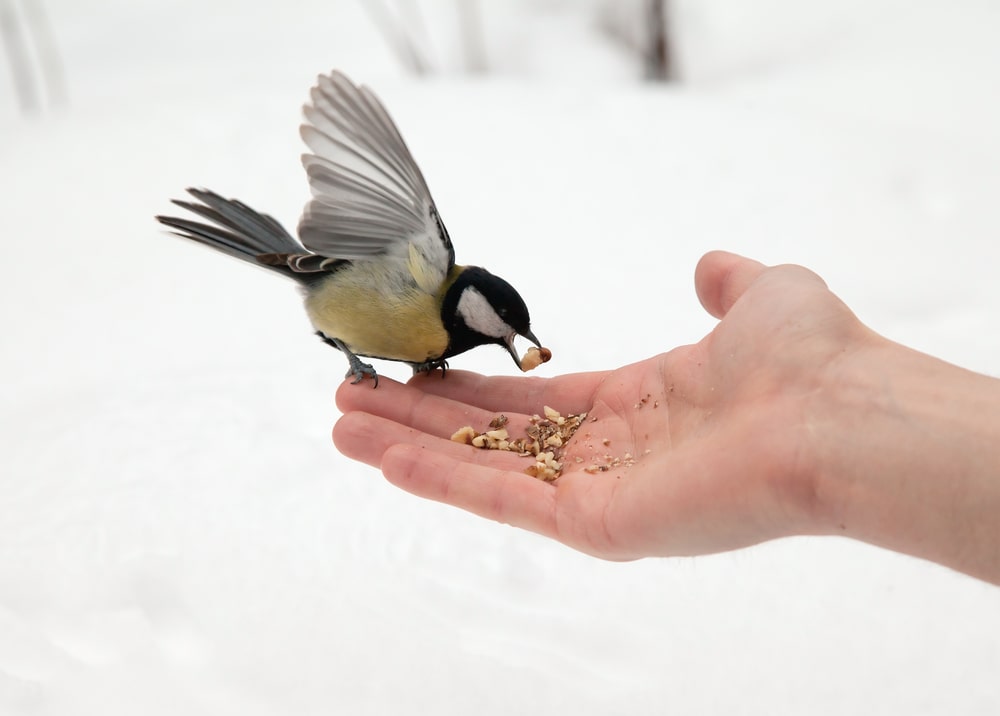This time of year, I watch the birds. I also feed them. Because there aren’t many insects available over the winter, most birds that winter here are seed eaters. Some seeds are better than others, however. Seeds and nuts with a higher fat content are best for winter feeding—black oil sunflower seeds and even peanuts.
What Should Be on the Bird Feeding Menu
You can use birdseed mixes, but do read the ingredient label and try to avoid too many fillers like red millet and wheat. A good mix should contain black oil sunflower seeds, white millet, even cracked corn and/or peanut bits. Remember, too, black thistle seed (Niger) to attract goldfinches.
Suet, rendered beef fat, is a great energy source. You can buy prepared suet cakes or make your own and add birdseed, chopped peanuts, etc. Ask the meat department at your local grocery store if they have leftover beef fat trimmings you can “melt” down. Here is a suet cake recipe from the Audubon Society:
- 1 ½ cup palm oil-free shortening or melted beef fat
- ¾ cup peanut butter
- 3 ½ cup birdseed
- 1 cup quick oats
- ½ cup cornmeal
Melt shortening and peanut butter together and pour over dry ingredients. Pour into ice cube trays and freeze for an hour or two. Great for winter feeding—do not use when temps are over 50.
Birds enjoy the moisture content and vitamins they find in various fruits so place aluminum pans filled with chopped grapes, apple tidbits, banana or orange slices—even chopped raisins which have been soaked in water first. Fruit will attract a wider variety of birds. Wash fruit carefully or buy organic to minimize pesticide residues.
No Bird Feeder? No Problem!
If you don’t have anywhere to hang a bird feeder, you can smear peanut butter on a tree trunk and press peanut bits or cracked corn into it. I have done that before and enjoyed watching the woodpeckers go after it.
If you’re thinking long-term bird-feeding, there are trees and shrubs like winterberry holly, American Beautyberry, Inkberry, Wax Myrtles, Sweet Bay Magnolia, or viburnums that have winter fruit/berries.
Provide a Water Source
It’s also good to provide a ready water source—a heated birdbath or pond with running water. This was brought home to me when I was putting a bowl of water out for the stray cats I feed and no sooner than I got in the front door than there were five birds surrounding that little bowl.
Do change the water every day or two. Watch for and replace frozen water during periods of freezing temperatures.
Share Your Bird Feeding Secrets
Is there anything you’ve put out for your birds and had them go nuts for? Let me know in the comments below.


Palm oil has been and continues to be a major driver of deforestation of some of the world’s most biodiverse forests, destroying the habitat of already endangered species like the Orangutan, pygmy elephant and Sumatran rhino. There are alternatives to palm oil, Google.
Oh, I agree! If you go back and re-read the sentence, it says “palm oil-free” shortening, meaning shortening that does not contain palm oil.
Thanks.
Great. Thanks for your sharing. Feeding birds in the winter is a very meaningful and necessary thing for bird feeder. Your tips are very helpful and good. I like the tip that puts peanut butter on the stem when there’s no bird feeder available. It’s so creative and I haven’t thought of this before. And can you show me how to keep bird bath from freezing?
There are little “immersion” heaters which will help. Topping your bird bath with hot water will help melt any icy edges that have started to form–and keep your bird bath on the FULL side as shallow water freezes” more quickly.